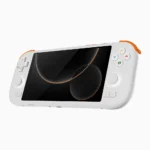With Raspberry Pi 5 emulation powering your retro gaming, your classic games library is about to expand.
Set for full release in early November 2023, the Raspberry Pi 5 is a significant upgrade on its predecessor.
Compared with the Raspberry Pi 4, the Pi has:
- A faster CPU (the ARM Cortex-A76 CPU, compared with the Pi 4’s Cortex-A72)
- Faster RAM (LPDDR4X-4267 SDRAM, whereas the Pi 4 offered just LPDDR4-3200 SDRAM)
- Improved graphics power (VideoCore VII GPU @800MHz)
- Faster microSD card support (UHS-1 cards, 80-90Mbps, compared with 40-50Mbps on the Pi 4)
- Faster USB 3.0 ports (5Gbps for each port; the Pi 4 shares 5Gbps across each)
- Greater power requirements (5V 5A (25W) PSU compared to the Pi 4’s 5V 3A (15W) PSU)
The Pi 5 also has:
- A PCIe connector
- Dedicated I/O chip
- MIPI camera/display ports have double lane bandwidth
- Onboard RTC
- UART connector
- Power button
It is worth noting that the Pi 5 has no audio/video via the 3.5mm TRRS port. Finally, the new board needs a heatsink for standard use, as opposed to purely for overclocking.
What does the Raspberry Pi 5 upgrade mean for retro gaming?
The Raspberry Pi platform is an affordable option for retro gamers.
Facts and figures aside, these hardware upgrades mean that the Raspberry Pi 5 can emulate retro gaming platforms that previous models cannot.
With the Raspberry Pi 4, you can comfortably emulate systems up to the Nintendo 64. Most N64 games will run, but not always perfectly.
Pushing things with overclocking and low-expectations can get some later console titles running, but it’s often not worth the effort.
However, priority release models of the Raspberry Pi 5 (i.e., those given to reviewers and sold to MagPi subscribers) have been shown to emulate:
- Sega Dreamcast
- Sony PSP
- Sony PlayStation 2
- Nintendo 64
- Game Boy Advance
- Nintendo GameCube
- Nintendo Wii
As with any new Raspberry Pi release, emulation cores and suites will need development. New revisions of the necessary software will appear over the coming months, with retro emulation improving on thie Raspberry Pi 5 over time.
You can order a Raspberry Pi 5 from The Pi Hut. Of course, you’ll still need all the other hardware and peripherals for building a Raspberry Pi5-based retro gaming centre.
Affiliate Disclosure: Some of the links in this post may be affiliate links, which means I may earn a small commission if you make a purchase through those links. This comes at no extra cost to you. Thank you for your support!
Christian Cawley is a writer and editor who covers consumer electronics, IT, and entertainment media. He has written for publications such as Computer Weekly, Linux Format, MakeUseOf.com, and Tech Radar.
He also produces podcasts, has a cigar box guitar, and of course, loves retro gaming.

